Los mejores cielos del mundo para observar el espacio están (en peligro) en Chile | vía #CIPERChile
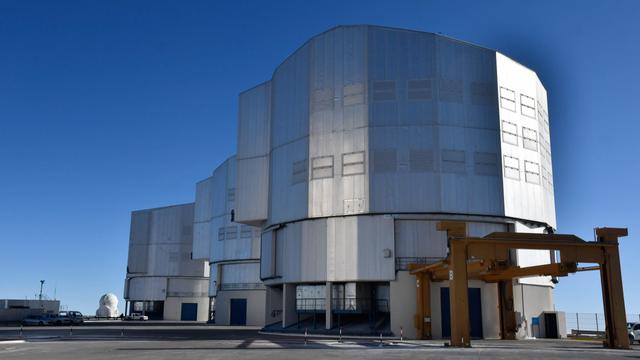
Los mejores cielos del mundo para observar el espacio están (en peligro) en Chile | vía #CIPERChile

Oxygen discovered in most distant known galaxy
https://www.eso.org/public/news/eso2507/
#ycombinator #ESO #eso_org #Astronomy #Astrophysics #Astronomie #Suedsternwarte #telescopes #detectors #comets #planets #stars #galaxies #nebulae #universe #NTT #VLT #VLTI #ALMA #ELT #La_Silla #Paranal #Garching #Chile

2h du matin, début de journée au QG de l'@esoastronomy à #Munich. La nuit a commencé au Chili, à #Paranal. Au programme : nuit de validation de l'optique adaptative de GRAVITY+, instrument du VLTI.
Bundespräsident #Steinmeier besucht diese Woche das #Paranal-Observatorium in #Chile – ein weltweit bedeutender Ort astronomischer Forschung. Doch nebenan soll nun ein Industriepark entstehen – mit schwerwiegenden Folgen für die #Forschung. Sophia Boddenberg berichtet: https://www.riffreporter.de/de/international/wasserstoff-projekt-paranal-observatorium-chile-lichtverschmutzung-teleskop
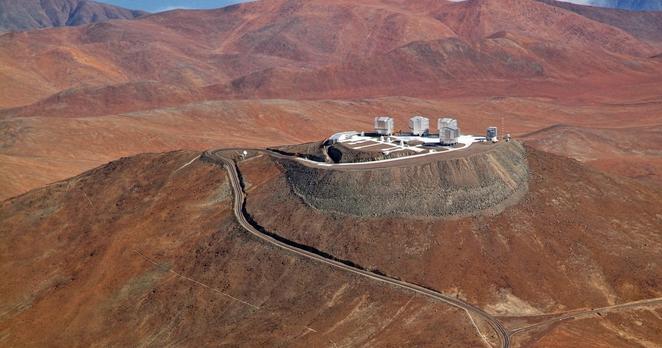
Teresa Paneque por proyecto INNA: “Acá se esta jugando el futuro de científico del país” | vía #UChileRadio
#ESO:
"
Beobachtungen der ESO helfen, den Einschlag des Asteroiden 2024 YR4 fast vollständig auszuschließen
"
".. Nach den neuesten Beobachtungen ist die Wahrscheinlichkeit eines Einschlags auf nahezu null gesunken. .. Einschlagwahrscheinlichkeit bei etwa 0,001 % .."
https://www.eso.org/public/germany/news/eso2505/?lang
25.2.2025
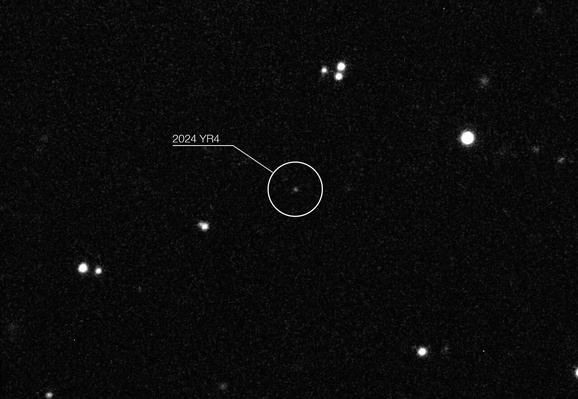
Video explicativo del proyecto y la situación en https://www.instagram.com/reel/DGYvAsCR2m0/
#SOCHIAS está haciendo colecta de firmas para apoyar el Término Anticipado del Proyecto. Te invito a mostrar tu apoyo firmando el formulario.
Formulario de firmas en https://docs.google.com/forms/d/e/1FAIpQLSdnVBEyRW3x-EmN1-U88qFg6GP106PFOniRDtg3gWeVJiC6ag/viewform

Video explicativo del proyecto y la situación en https://www.instagram.com/reel/DGYvAsCR2m0/
#SOCHIAS está haciendo colecta de firmas para apoyar el Término Anticipado del Proyecto. Te invito a mostrar tu apoyo firmando el formulario.
Formulario de firmas en https://docs.google.com/forms/d/e/1FAIpQLSdnVBEyRW3x-EmN1-U88qFg6GP106PFOniRDtg3gWeVJiC6ag/viewform

Because of #Chile’s near-ideal conditions for astronomy, it has become home to almost 40 percent
of the world’s ground-based astronomy observing
capacity. Including current projects under construction
, within the next decade that number will increase
to 60 percent. This makes any threat to the natural celestial purity of this remote region of Chile a threat to the present and future of ground-based astronomy as a whole https://www.scientificamerican.com/article/europes-extremely-large-telescope-faces-a-new-dire-threat

Der Standort einiger der wichtigsten Teleskope weltweit ist gefährdet, denn in unmittelbarer Nähe des Paranal-Observatoriums in Chile ist ein riesiger Industriekomplex geplant. #Paranal #ESO #Astronomie #Lichtverschmutzung #Teleskope
https://www.scinexx.de/news/kosmos/industriekomplex-gefaehrdet-paranal-observatorium/
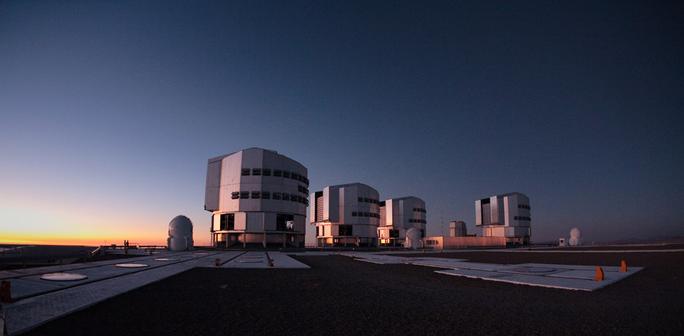
Dunkelster & klarster Himmel der Welt durch industrielles Megaprojekt gefährdet
Am 24.12. reichte AES Andes, Tochter der US-Fa. AES Corp., Projekt für Industriekomplex ein, bedroht makellosen Himmel über Paranal-Observatorium in chilenischer Atacama-Wüste, dunkelster & klarster HImmel der Welt! Industrielles Megaprojekt soll 5-11 km von Teleskopen entfernt entstehen, Lichtverschmutzung würde Astronomie extrem beeinträchtigen. Pressemitteilung/Bild: #ESO. #Paranal
https://www.raumfahrer.net/der-dunkelste-und-klarste-himmel-der-welt-ist-durch-ein-industrielles-megaprojekt-gefaehrdet/
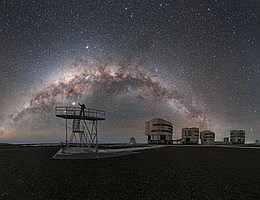
Darkest and clearest skies at risk from industrial megaproject
https://www.eso.org/public/news/eso2501/
#ycombinator #ESO #eso_org #Astronomy #Astrophysics #Astronomie #Suedsternwarte #telescopes #detectors #comets #planets #stars #galaxies #nebulae #universe #NTT #VLT #VLTI #ALMA #ELT #La_Silla #Paranal #Garching #Chile
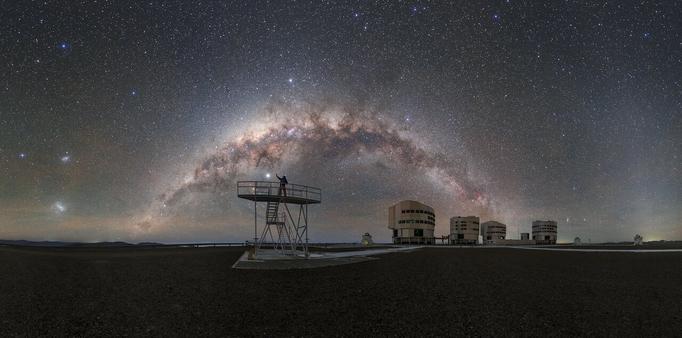
World's darkest and clearest skies at risk from industrial megaproject.
Since its inauguration in 1999, #Paranal Observatory has led to significant #astronomy breakthroughs, such as the first image of an #exoplanet and confirming the accelerated expansion of the #Universe.
Now Paranal is threatened by an industrial megaproject, planned to be located just 5 to 11 kilometres, which would cause irreparable damage to astronomical observations due to light pollution.

"The industrial #megaproject is planned to be located just 5 to 11 kilometres from telescopes at Paranal, which would cause irreparable damage to astronomical observations, in particular due to light pollution emitted throughout the project’s operational life. Relocating the complex would save one of Earth's last truly pristine dark skies." (via @esoastronomy)

Lasst mal schauen, ob wir noch irgendwo irgendwas kaputt machen können, um Geld zu verdienen. https://www.eso.org/public/germany/news/eso2501/?lang von @esoastronomy #vlt #elt #paranal

#ESO:
"
..dunkelste + klarste Himmel d. Welt .. durch .. industrielles Megaprojekt gefährdet
"
"Am 24.12. reichte AES Andes, .. Tochtergesellschaft d. US-.. Energieversorgers AES Corporation, ein Projekt f. ..riesigen Industriekomplex zur Umweltverträglichkeitsprüfung ein. .. Komplex bedroht d. makellosen Himmel über d. Paranal-Observat..."
https://www.eso.org/public/germany/news/eso2501/?nolang
10.1.2025

First segments of the world's largest telescope mirror shipped to Chile
The construction of the European Southern Observatory’s Extremely Large Telescope (ESO's ELT) has reached an important milestone with the delivery to ESO and shipment to Chile of the first 18 segments of the telescope’s main mirror (M1).
Once they arrive in Chile, the segments will be transported to the ELT Technical Facility, at ESO’s Paranal Observatory in the country’s Atacama Desert, where they will be coated in preparation for their future installation on the telescope main structure.
Unable to be physically made in one piece, M1 will consist of 798 individual segments arranged in a large hexagonal pattern, with an additional 133 being produced to facilitate the recoating of segments.
With a diameter of more than 39 metres, it will be the largest telescope mirror in the world.
The final stage in the production process of M1 segments — polishing — was carried out by world-leading optical systems manufacturer Safran Reosc near Poitiers, central France, at a building completely refurbished to work on this delicate task.
As part of the process, Safran Reosc developed new automation workflows and measurement techniques to ensure that the polishing met the high standards required for ESO's ELT.
The surface irregularities of the mirror are less than 10 nanometres (less than one thousandth of the width of a human hair).
To reach this level of performance, Safran Reosc used a technique called ion-beam figuring, in which a beam of ions sweeps the mirror surface and removes irregularities atom by atom
#elt #astrodon #Paranal #Chile
https://www.eso.org/public/news/eso2319/